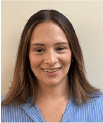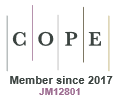Complement in chronic wound infections: complementary or a cascade of chaos?
Michelle N. Chamoun A * and Gabriela Gonzalez Matheus A BA
B

Dr Michelle Chamoun is a postdoctoral research fellow at the Frazer Institute, The University of Queensland. Her current research, in the laboratory of Dr Timothy Wells, focuses on antibody-mediated serum resistance of Gram-negative bacterial infections. Her expertise is in Immune dysregulation in Gram-negative bacterial infections and has a special interest in chronic skin and wound infections. |

Dr Gabriela Gonzalez Matheus is a medical doctor working in the dermatology field with a specific interest in chronic wounds and skin healing. She recently completed a Master of Philosophy on immune-mediated chronicity of wounds colonised by Pseudomonas aeruginosa. |
Abstract
Chronic wounds are non-healing ulcers and are frequently accompanied with bacterial infection. These wounds bypass the normal healing process due to impaired cellular responses and excessive inflammation, likely triggered by bacterial infection and biofilm formation. Complement dysregulation, particularly the overproduction of anaphylatoxin C5a, is a pathogenic variable in many inflammatory diseases and other infectious diseases. There is some evidence that overproduction of C5a may contribute to poor healing outcomes; however, more research is required to clarify its role and determine how this influences host–pathogen interactions within the wound environment. Studying the complement system in a research environment is challenging due to factors such as sample composition, timing of collection, temperature and freeze–thaw cycles, all potentially affecting data reliability. Furthermore, various methods are available to study complement activity, including assays for bacterial opsonisation, serum bactericidal killing, and detection or quantification of individual complement components. This article explores the important role of complement dysregulation in chronic wound healing and discusses important considerations for advancing research in this area, including optimisation of laboratory processes to ensure accurate data.
Keywords: biofilm, chronic wounds, complement, host–pathogen interactions, inflammation, Pseudomonas aeruginosa, sample processing, Staphylococcus aureus.
 Dr Michelle Chamoun is a postdoctoral research fellow at the Frazer Institute, The University of Queensland. Her current research, in the laboratory of Dr Timothy Wells, focuses on antibody-mediated serum resistance of Gram-negative bacterial infections. Her expertise is in Immune dysregulation in Gram-negative bacterial infections and has a special interest in chronic skin and wound infections. |
 Dr Gabriela Gonzalez Matheus is a medical doctor working in the dermatology field with a specific interest in chronic wounds and skin healing. She recently completed a Master of Philosophy on immune-mediated chronicity of wounds colonised by Pseudomonas aeruginosa. |
References
1 Wood F (2024) 5 Point Plan to Solve Chronic Wounds. Wounds Australia. https://woundsaustralia.org/int/woundsaus/uploads/Publications/5%20point%20plan%202024/wounds%20australia%205%20point%20plan%202024.pdf (accessed 30 April 2025)
2 Frykberg RG, Banks J (2015) Challenges in the treatment of chronic wounds. Adv Wound Care 4, 560-582.
| Crossref | Google Scholar | PubMed |
3 Matheus GG et al. (2025) Understanding the pathophysiology of Pseudomonas aeruginosa colonization as a guide for future treatment for chronic leg ulcers. Burns Trauma 13, tkae083.
| Crossref | Google Scholar | PubMed |
4 Versey Z et al. (2021) Biofilm-innate immune interface: contribution to chronic wound formation. Front Immunol 12, 648554.
| Crossref | Google Scholar | PubMed |
5 Wilkinson HN, Hardman MJ (2020) Wound healing: cellular mechanisms and pathological outcomes. Open Biol 10, 200223.
| Crossref | Google Scholar | PubMed |
6 Velnar T et al. (2009) The wound healing process: an overview of the cellular and molecular mechanisms. J Int Med Res 37, 1528-1542.
| Crossref | Google Scholar | PubMed |
7 Rodríguez-Rodríguez N et al. (2022) Wound chronicity, impaired immunity and infection in diabetic patients. MEDICC Rev 24, 44-58.
| Crossref | Google Scholar | PubMed |
8 MacLeod AS, Mansbridge JN (2016) The innate immune system in acute and chronic wounds. Adv Wound Care 5, 65-78.
| Crossref | Google Scholar | PubMed |
9 Martin P, Nunan R (2015) Cellular and molecular mechanisms of repair in acute and chronic wound healing. Br J Dermatol 173, 370-378.
| Crossref | Google Scholar | PubMed |
10 Haidari H et al. (2023) Therapeutic potential of antimicrobial peptides for treatment of wound infection. Am J Physiol Cell Physiol 324, C29-C38.
| Crossref | Google Scholar | PubMed |
11 Van Der Laan N et al. (2001) Immunohistopathological appearance of three different types of injury in human skin. Inflamm Res 50, 350-356.
| Crossref | Google Scholar | PubMed |
12 Knackstedt R et al. (2020) The role of topical probiotics on wound healing: a review of animal and human studies. Int Wound J 17, 1687-1694.
| Crossref | Google Scholar | PubMed |
13 Panelius J, Meri S (2015) Complement system in dermatological diseases – fire under the skin. Front Med 2, 3.
| Crossref | Google Scholar | PubMed |
14 Wang Z et al. (2022) Inflammatory microenvironment of skin wounds. Front Immunol 13, 789274.
| Crossref | Google Scholar | PubMed |
15 Ghosh M, Rana S (2023) The anaphylatoxin C5a: structure, function, signaling, physiology, disease, and therapeutics. Int Immunopharmacol 118, 110081.
| Crossref | Google Scholar | PubMed |
16 Müller-Redetzky H et al. (2020) Neutralizing complement C5a protects mice with pneumococcal pulmonary sepsis. Anesthesiology 132, 795-807.
| Crossref | Google Scholar | PubMed |
17 Li K et al. (2017) C5aR1 promotes acute pyelonephritis induced by uropathogenic E. coli. JCI Insight 2, e97626.
| Crossref | Google Scholar | PubMed |
18 Cunnion KM et al. (2017) Complement activation and STAT4 expression are associated with early inflammation in diabetic wounds. PLoS ONE 12, e0170500.
| Crossref | Google Scholar | PubMed |
19 Rafail S et al. (2015) Complement deficiency promotes cutaneous wound healing in mice. J Immunol 194, 1285-1291.
| Crossref | Google Scholar | PubMed |
20 Sinno H et al. (2013) Complements C3 and C5 individually and in combination increase early wound strength in a rat model of experimental wound healing. Plast Surg Int 2013, 243853.
| Crossref | Google Scholar | PubMed |
21 Korkmaz HI et al. (2017) The local and systemic inflammatory response in a pig burn wound model with a pivotal role for complement. J Burn Care Res 38, e796-e806.
| Crossref | Google Scholar | PubMed |
22 Cazander G et al. (2012) Complement activation and inhibition in wound healing. Clin Dev Immunol 2012, 534291.
| Crossref | Google Scholar | PubMed |
23 Mateu-Borrás M et al. (2022) Pseudomonas aeruginosa adaptation in cystic fibrosis patients increases C5a levels and promotes neutrophil recruitment. Virulence 13, 215-224.
| Crossref | Google Scholar | PubMed |
24 Schmidtchen A et al. (2003) Elastase-producing Pseudomonas aeruginosa degrade plasma proteins and extracellular products of human skin and fibroblasts, and inhibit fibroblast growth. Microb Pathog 34, 47-55.
| Crossref | Google Scholar | PubMed |
25 Pestrak MJ et al. (2019) Treatment with the Pseudomonas aeruginosa glycoside hydrolase PslG combats wound infection by improving antibiotic efficacy and host innate immune activity. Antimicrob Agents Chemother 63, e00234-19.
| Crossref | Google Scholar | PubMed |
26 Willrich M et al. (2021) Complement testing in the clinical laboratory. Crit Rev Clin Lab Sci 58, 447-478.
| Crossref | Google Scholar | PubMed |
27 Brandwijk R et al. (2022) Pitfalls in complement analysis: a systematic literature review of assessing complement activation. Front Immunol 13, 1007102.
| Crossref | Google Scholar | PubMed |
28 Yang S et al. (2015) Effect of blood sampling, processing, and storage on the measurement of complement activation biomarkers. Am J Clin Pathol 143, 558-565.
| Crossref | Google Scholar | PubMed |
29 Wonfor T et al. (2022) Novel method for detecting complement C3 deposition on Staphylococcus aureus. Sci Rep 12, 15766.
| Crossref | Google Scholar | PubMed |
30 Hickson SM et al. (2024) Antibody-mediated serum resistance protects Pseudomonas aeruginosa during bloodstream infections. J Infect Dis 230, e221-e229.
| Crossref | Google Scholar | PubMed |


